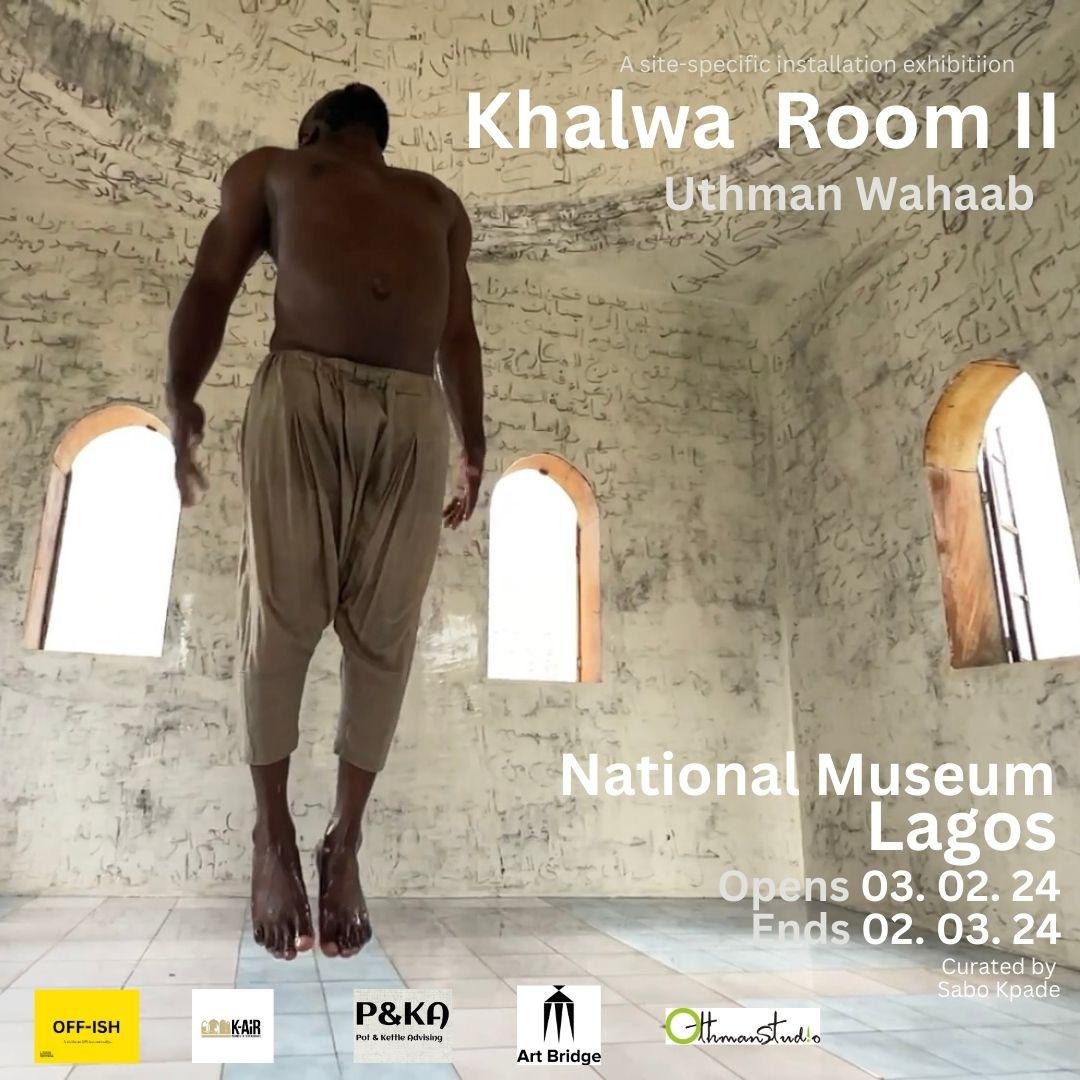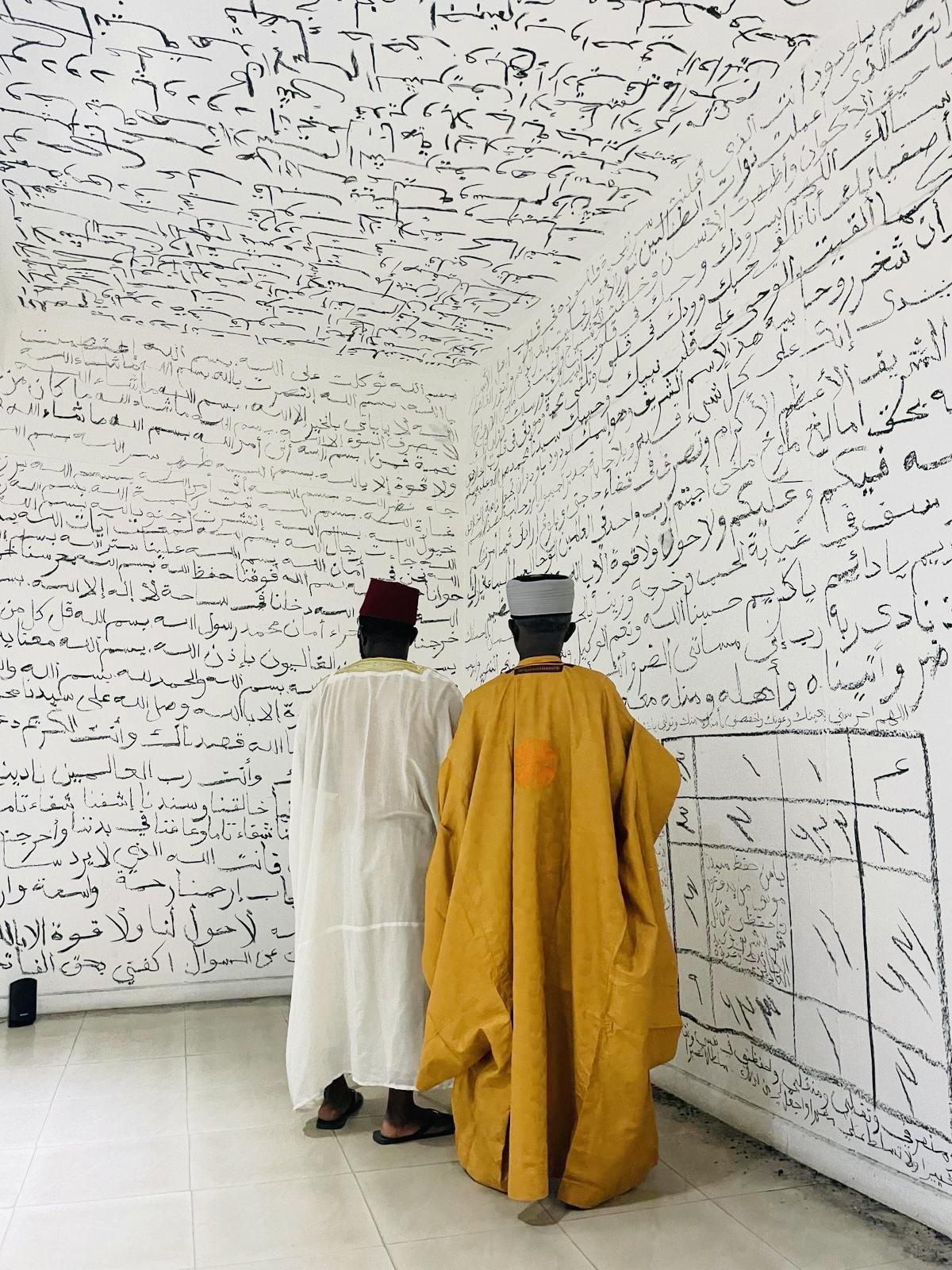Uthman Wahaab: Khalwa Room II
3rd February – 2nd March, 2024
National Museum
Lagos, Nigeria

Othman Studio is proud to present Khalwa Room II (2024) at National Museum Lagos, Uthman Wahaab’s second showing at the biennale, following his 2019 presentation at Independent Building (Lagos). Taking place from 3rd February — 2nd March, 2024, the exhibition is a part of Off-ish, off-site projects in conjunction with Lagos Biennale 2024 (closes 10th February, 2024). Khalwa Room II is designed as a site specific installation, incorporating Wahaab’s
multidisciplinary practice including performance and paintings, video work and photography, synesthesia and acoustics. Khalwa Room series is the result of Wahab’s family’s long-term practice of Sufism, the Islamic practice closely associated with mysticism and spirituality. The artist’s immersive examination of art and religion is staged across two dedicated gallery spaces at National Museum Lagos repurposed, for the sake of the exhibition, as Gallery I and Gallery II.
Conceived as an intervention for rejuvenation and renewal, Khalwa Room II deploys new perspectives to gesturalism through select media combining the personal and the political. Founded in 1957, shortly before Nigeria’s independence from English rule, the Nigerian National Museum (Lagos) is host to major collections of the nation’s material culture that include the famous Nok artefacts and Benin sculptures. Created at the dawn of Nigeria’s own renewal as a sovereign nation, National Museum Lagos remains a symbol of national pride and postcolonial ideas about history, art and architecture.
Gallery I: Khalwa Room (2024)
In the lead up the exhibition at National Museum Lagos, Wahaab will embark on an onsite performance of khalwa rituals and processions in Gallery I. Using charcoal and the gallery’s walls and ceiling, the artist will create abstractions in his signature draughtsmanship, inspired by Islamic calligraphy. The artist combines Kufic script, gesticulation, routine prayer recitals known as lazim and spiritual invitations of ruhu which, in one definition, is the “angelic quality bestowed upon humans, but not an angel himself”, using his body as tool and surface.
Gallery II: Khalwa I (2022-2023)
Khalwa I (2022-2023) is Wahaab incipient staging of khalwa as performance art in which the artist deployed the male body in performance to explore Sufi mysticism and beliefs. Recorded on location in Ibadan (Oyo State) — during the artist’s participation in Kob’omoje Art Residency (2022) — Khalwa Room I depicts ritualised cleansing, using the installation’s constituent media of charcoal and water, to investigate themes of physical and spiritual purification in relation to self and space.
Documented in one major video work and a photographic series, Khalwa Room I complicates Abstract Expressionist art, by undoing creation in favour of regeneration. Closed to the public and guided by a sheikh, post-khalwa de-installation serves two purposes: as a standalone performance, and as basis for Khalwa Room III, Wahaab’s subsequent instalment of khalwa-inspired performances, which continues the artist’s abiding themes of religiosity and material life, temporal specificity and unfinalizability in art and self making.
Rejuvenating Anfas (2024)
Rejuvenating Anfas (2024) is a conceptual sound work composed of Sufi prayers and ritual chants, text and supplications that are unique interpretations of Islam in West Africa, and Nigeria in particular. Created in response to Wahaab’s calligraphic abstractions, the immersive soundscape draws from a set of sources including live recordings from Quranic healing recitals recorded onsite in Ilorin (Kwara State, Nigeria), Sufi prayer recitals by Dr Sadegh Aleahmad, the British-Iranian multidisciplinary artist and disparate sound banks on the internet, co-produced by Kemi Ladiju, the British-Nigerian sound designer. In Rejuvenating Anfas, ambient sounds alternates with sonorous utterings, at times meditative and, at other times, excitable. In rare occurrences, khalwa, when accompanied by these chants and prayers, are trance inducing which some believe necessitates divine visitations.
